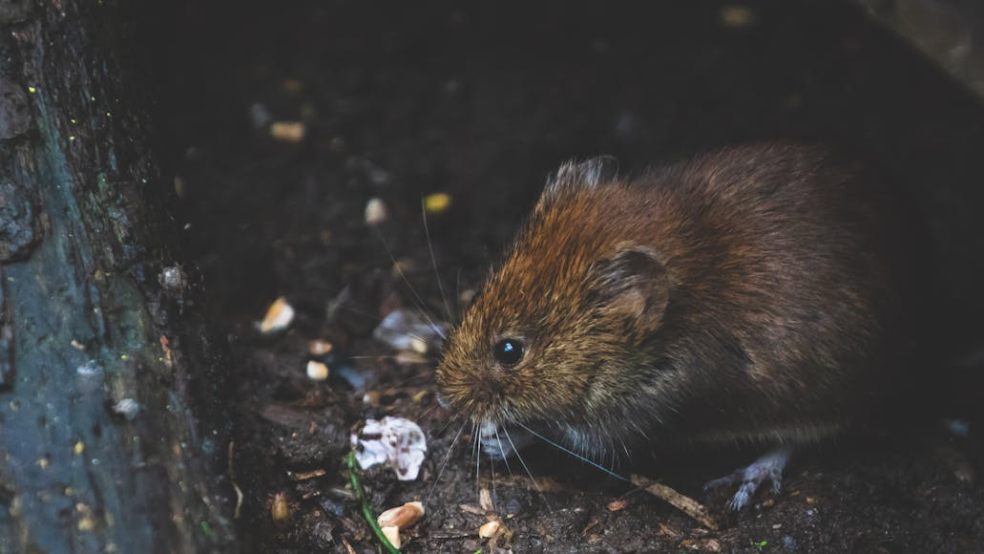
Effective Approaches to Household Infestations
Household infestations can be a stressful and overwhelming problem, often leaving homeowners feeling helpless as pests infiltrate their homes. Whether it’s termites, cockroaches or rodents, addressing these issues promptly and effectively is crucial to maintaining the safety and comfort of your living space. In this blog, we will explore fresh and practical strategies for tackling household infestations and keeping pests at bay.
Understanding Pest Behaviour
Before diving into solutions, it’s important to understand why pests invade our homes. Most pests are driven by basic survival instincts - seeking food, water and shelter. By identifying the environmental factors that attract pests, you can make your home less inviting to them in the first place. For instance, a warm, dark and undisturbed space is ideal for rodents or insects looking to nest. Knowing their motivations helps tailor your approach to pest control and creates a more targeted solution. If you’re dealing with a persistent bed bug issue, consider professional services like ThermoPest Bed Bug Treatments, which offer effective and eco-friendly solutions to eliminate these pests from your home.
Natural Barriers to Pest Control
In many cases, pests can be deterred without resorting to chemicals or traps. There are several natural methods to create physical and chemical barriers that pests simply won’t cross.
- Physical Barriers: Install door sweeps and window screens and seal all gaps around pipes or vents. This prevents pests from entering the home through the tiniest of openings.
- Natural Deterrents: Plants like citronella, basil and marigolds can act as natural repellents. Certain herbs release fragrances that pests dislike, especially mosquitoes and flies. Consider planting them near entryways or windows.
These methods are safe and can help reduce the chances of an infestation before it even starts.
Routine Inspections for Peace of Mind
One of the best ways to prevent an infestation is by performing regular inspections around your home. Routine checks allow you to spot potential pest problems before they escalate. Look for signs such as droppings, nests and unusual damage to your property. Regularly inspecting areas such as attics, basements and crawlspaces, which are often overlooked, can reveal hidden infestations before they become widespread.
By scheduling seasonal inspections - perhaps once every few months - you can ensure that small problems don’t evolve into larger ones.
Addressing Infestations with Integrated Pest Management
Integrated pest management (IPM) is a holistic approach to pest control that focuses on long-term solutions. It combines various methods of pest control, from biological to cultural practices, to minimise the use of chemicals. The primary goal of IPM is to reduce the impact of pests while being mindful of the environment and human health.
Key components of IPM include:
- Monitoring Pest Populations: Using traps or visual inspections to monitor pest activity.
- Prevention Techniques: Preventing infestations through sanitation and sealing cracks and gaps.
- Control Measures: If pests are found, using the least toxic options, such as natural predators or organic sprays, to target them.
IPM is an effective way to reduce pest populations in your home without relying solely on chemical pesticides, making it a safer and more sustainable choice.
The Importance of Hygienic Practices
Pests are often attracted to homes that are not regularly cleaned. Proper sanitation plays a significant role in deterring infestations. Pests such as ants, cockroaches and rodents thrive in areas where food or waste is left unattended. Keeping your home clean and clutter-free can eliminate potential food sources and hiding places for pests.
- Kitchen Cleanliness: Clean your kitchen daily, wiping down work surfaces, sweeping floors and ensuring food is stored in sealed containers. Pay attention to crumbs and food debris that often go unnoticed.
- Storage Areas: Declutter storage areas like basements and garages. Avoid leaving boxes or paper piles on the floor, as they can serve as hiding spots for pests.
- Waste Management: Make sure rubbish bins are regularly emptied and bags are tightly sealed. Pests are drawn to food scraps, so keeping your waste management routine consistent is essential.
Maintaining a high level of cleanliness not only prevents infestations but also ensures your home remains a healthier space to live in.
Smart Technology in Pest Control
As technology advances, new tools and solutions are becoming available to assist with pest control. From ultrasonic devices that emit frequencies to repel rodents and insects to smart traps that alert you when they’ve caught a pest, technology can be an effective and non-intrusive way to handle infestations.
For example, ultrasonic pest repellents work by emitting high-frequency sound waves that are unpleasant to pests but undetectable to humans. These devices are especially useful for repelling rodents and insects from entering your home without the need for chemicals. While the effectiveness of some devices may vary, they provide a modern, eco-friendly option for pest management.
Eco-Friendly Pest Control Alternatives
While traditional pest control methods often rely on chemicals, there are a variety of eco-friendly alternatives that can be just as effective. These green solutions are ideal for those who want to protect their homes while minimizing the use of harsh chemicals that could harm the environment.
- Essential Oils: Essential oils like peppermint, eucalyptus, and tea tree oil can be used as natural pest repellents. When diluted with water and sprayed around the home, they can help keep pests like spiders, ants and cockroaches at bay.
- Diatomaceous Earth: This natural powder is effective against many crawling insects. It’s safe for humans and pets but deadly to insects because it dehydrates them. Sprinkling diatomaceous earth around areas where pests are seen can help control the problem.
- Cedarwood Chips: Cedar has a natural ability to repel moths and other insects. Placing cedarwood chips in closets or storage areas is an easy and eco-friendly way to protect your clothing and belongings.
These alternatives offer a sustainable approach to pest control and are often safer for children and pets, making them an excellent choice for households that prefer to avoid chemical treatments.
When to Seek Professional Help
While DIY methods and preventative measures can be effective, there are times when the problem becomes too complex or severe to manage on your own. When an infestation grows beyond what you can handle, it’s important to call in a professional pest control service.
Professionals can assess the situation, use advanced treatments that may not be available to the public, and tackle larger infestations in a timely and efficient manner. If you’ve attempted multiple DIY solutions and the problem persists, it may be time to bring in an expert to eliminate the issue once and for all.
Additionally, if the infestation poses a significant health risk, such as with rodents carrying diseases, it’s important to seek professional help immediately to safeguard your family.
Conclusion
Effective pest control involves a combination of prevention, early identification and targeted solutions. Whether you’re tackling an infestation yourself or calling in a professional, there are plenty of approaches to ensure your home remains free of pests. From creating natural deterrents to maintaining cleanliness, each step plays a vital role in keeping your living environment safe, healthy and comfortable.

















